For my birthday a few weeks back, I had a couple of beers and then went longbox diving for random things I vaguely remember that are not available digitally, not least because I could then write posts about them here. This is one of those things. A formatting note on this specific book: this was a beaten up, yellowed version of the original trade paperback with pages coming loose, so I was loath to try to wedge it into my scanner. As a result, the images below are pics taken by hand with my phone, with some attempted color-balancing by me after the fact to decrease the yellowing and kill the glare. I apologize to literally every human being involved in the creation of this book for the resulting butchery.
THE BOOK: Machine Man TPB, collecting a four-issue limited series published by Marvel Comics in 1984-1985 (which STUNNED me–I hadn’t looked at the date before sitting down to write this, and I would’ve bet cash money on 1986 or 1987).
THE CREATORS: Written by Tom DeFalco; layouts on #1-3 by Herb Trimpe; finishes on #1-3, plot and art on #4, and colors throughout by the mighty Barry Windsor-Smith.
THE CONCEPT: In 1980, Tom Defalco wrote the last few issues of the original Machine Man book (following Marv Wolfman’s departure) with art by Steve Ditko, capping off a series that started with nine issues of Jack Kirby. I have never read those issues, but I assume this was some kind of a triumphant return to the character–only this time spun into the unfathomably far-off future year of 2020. Annnnnnnnnnnnnnd that’s the high concept: Machine Man wakes up in 2020, where he has some adventures. The end. (“Alternate history Flash is paralyzed saving JFK and becomes an archaeologist on Mars” this is not.) Or maybe the high-concept is just “Go to it, Barry Windsor-Smith.” I dunno.
I had never read this series (that I recall), and I came to this collection with some serious preconceptions about all the creators involved:
Barry Windsor-Smith was, to me, a Special artist. Not just that his work had a unique quality to it (although it certainly did), but that he was the kind of big gun who was brought in to draw Very Special Issues of comics. Just off the top of my head: The two Lifedeath stories in X-Men; the Wolverine solo against Lady Deathstrike issue in Uncanny X-Men #205; the dream sequence issue of Iron Man that serves as an epilogue to the Armor Wars storyline (#232), and the capstone to a two-year long slow burn plot after Tony Stark is shot in the chest in issue #243; later on, the Weapon X storyline in Marvel Comics Presents, finally giving some of Wolverine’s long-hidden backstory. Those are the things I associate him with, not his earlier, more workmanlike jobs pre-1980 or so. He was not a guy you’d expect to find if you picked up a random issue of Nth Man or whatever. So his presence here meant that this book was, by tautology, Very Special. On the other hand….
The late Herb Trimpe is among the most workmanlike Marvel artists of my childhood. If there’s a book that I enjoyed but have no specific visual memory of, odds are good that it was drawn by Trimpe or Al Milgrom. His presence was a direct counterbalance to Windsor-Smith’s, in my mind.
And Tom DeFalco … I have two very distinct mental images of Tom DeFalco, neither particularly flattering. The first is my childhood image of him, gleaned from his editorials and the caricature of him on the Bullpen Bulletins page: a classic New York stereotype, portly and bearded and brash, with a cigar. He wrote a lot of comics that I read and enjoyed as a kid, and very few that I have any distinct memory of. The second mental image comes from much later–1999 or so. I was at a convention with my then-girlfriend, and DeFalco was shilling for some book he was doing, which he patronizingly assured us that “even girls could enjoy”. He was smaller than he’d seemed in caricature, and somehow grubbier; the whole experience left a bad taste in my mouth that almost certainly retroactively influenced my opinion on his comics.
So with one major pro, one neutral-leaning-negative, and one severe negative preconception, I was pretty shocked by how much I enjoyed this comic.
WHAT WORKS:
- The Barry Windsor-Smith art, above all else. His ability to make a story seem Special (as nauseatingly detailed above) elevates any weak spots in this material. Some of the reasons are obvious: It’s right in his wheelhouse of organic-looking bundles of wires and machinery. The coloring is recognizably his palette of blues and purples and pinks. But I tend to think of him as an artist of quiet and calm (the first image I always think of is the opening page of the original Lifedeath story, Storm curled under the bedsheets), so it was a pleasure to be reminded that he can really sell kineticism and action when he needs to–the motorcycle crash above was a total fist-pump moment.
- And Trimpe doesn’t drag him down in any way on the first three issues. You can occasionally feel the slight grinding of gears, the layouts pulling Windsor-Smith toward six-panel Marvel genericism, but for the most part Trimpe lays out a readable page and then Windsor-Smith Windsor-Smiths all over it, and the book is a pleasure to look at.
- The story is, at first glance, forgettably adequate. It checks all the boxes of near-future sci-fi and cyberpunk–gangs of scavengers, wealthy technological elite, Blade Runner cities, etc. Which is why the publication date came as such a shock: there are elements of Neuromancer here, of short stories by Bruce Sterling and Marc Laidlaw–all of which were either directly contemporary or published AFTER this mini-series. This is a much younger Tom DeFalco, one who appears (in hindsight) to be genuinely engaged with and intrigued by the then-newest ideas in sci-fi, and who very much wants to get them into comic form. You could slot this in to a “Cyberpunk in the 1980s” anthology without any hesitation.
- DeFalco keeps his cyberpunk world firmly entrenched in the Marvel Universe: Sunset Bain shows up as a cyberpunk bad guy, Jocasta is still hanging around, and we’re introduced to Arno Stark, the Iron Man of 2020. It’s fun stuff, very much of its era but delightfully so.
- Also playing against my mental image of DeFalco is the book’s comfort with … I don’t know if “gender fluidity” is too generous a term, but there’s a sense of style and androgyny in the team of “Wreckers” that’s much more modern than I’d have given DeFalco credit for.
- The vidiots are pretty prescient, honestly:
WHAT DOESN’T:
- Look, despite the compliments above, DeFalco gonna DeFalco. Some of the plot elements are clunky. None of the central conflict is particularly memorable. Some of the slang is beyond terrible. Here, look at this, from early in the book. (I suppose I should give him SOME credit for correctly predicting the slang use of “tight,” but … why are robots abbreviated as both “‘bot” and “ro” in the same panel?)
- Machine Man himself isn’t a real winner of a lead character here. The book keeps nodding in the direction of interesting ideas to do with his humanity (of course), with being flung into his own future, etc., but mainly leans on him as a really tough ‘bot. Unlike with the villains, you could strip the Marvel Universe serial numbers off the eponymous lead character and make virtually no change to the story. Even his relationship with Jocasta is underexplored and underdeveloped, despite being kinda crucial to the plot.
- The ending is underwhelming enough that, when I could feel that I only had a page or two left, I wondered if this beat-up TPB had had a few pages torn out of the back. I’m really not sure if the creative team expected to be able to continue this story somewhere, or if they thought they might get a few more issues, or if they just badly misjudged some of the pacing, but … yeah, it definitely doesn’t land for me as the resolution to a collected edition, and I can’t imagine people being much happier with it when they just bought it off a spinner rack somewhere.
SHOULD IT BE ONLINE: ABSOLUTELY. Barry Windsor-Smith didn’t do all that much work for Marvel in this style, and this should be more readily available for that reason alone. Even beyond that, it’s a fun look-at-the-past-looking-at-the-future book, and would certainly be worth four bucks on a Comixology sale or 30 minutes of your time on Marvel Unlimited.
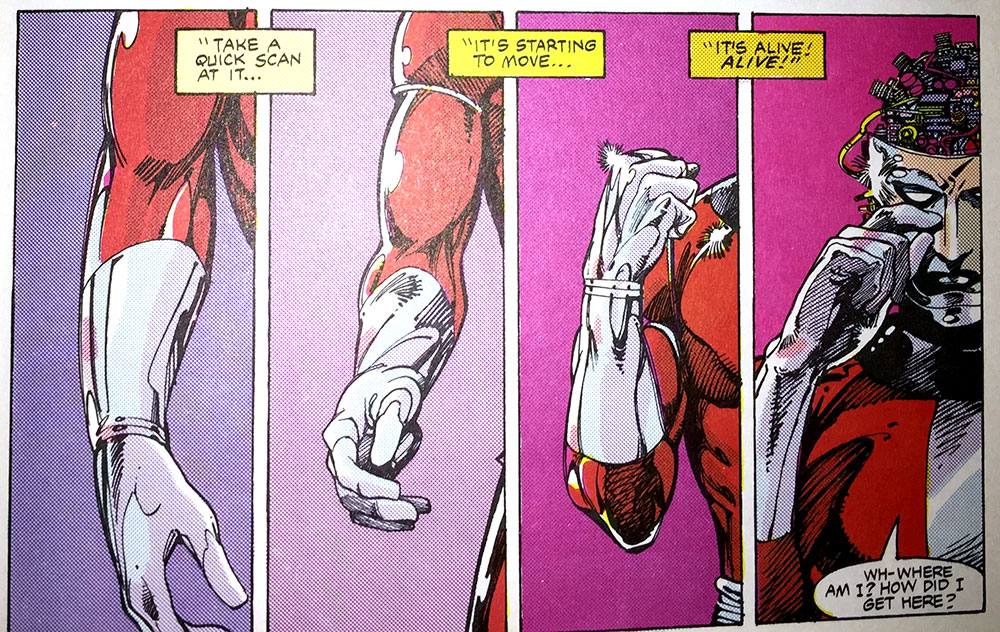
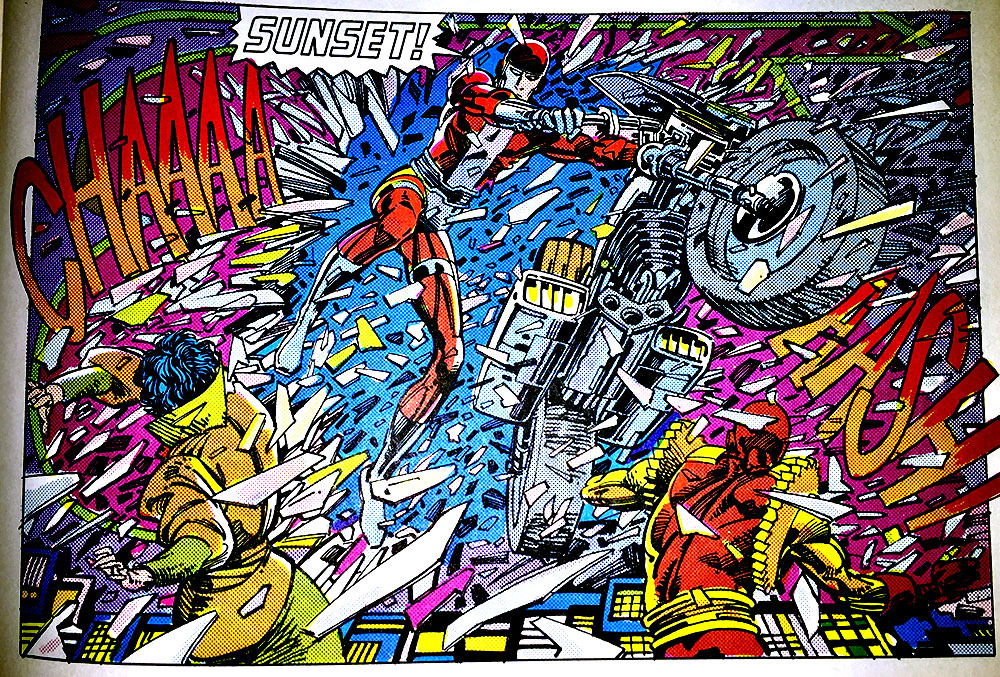
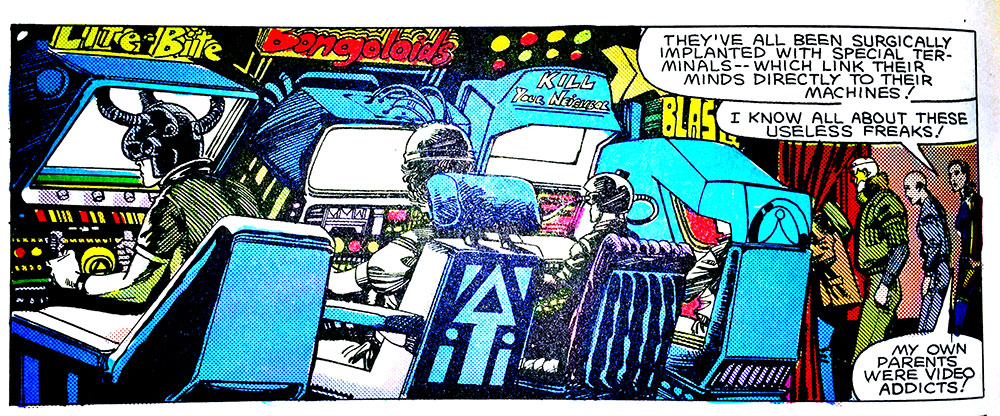
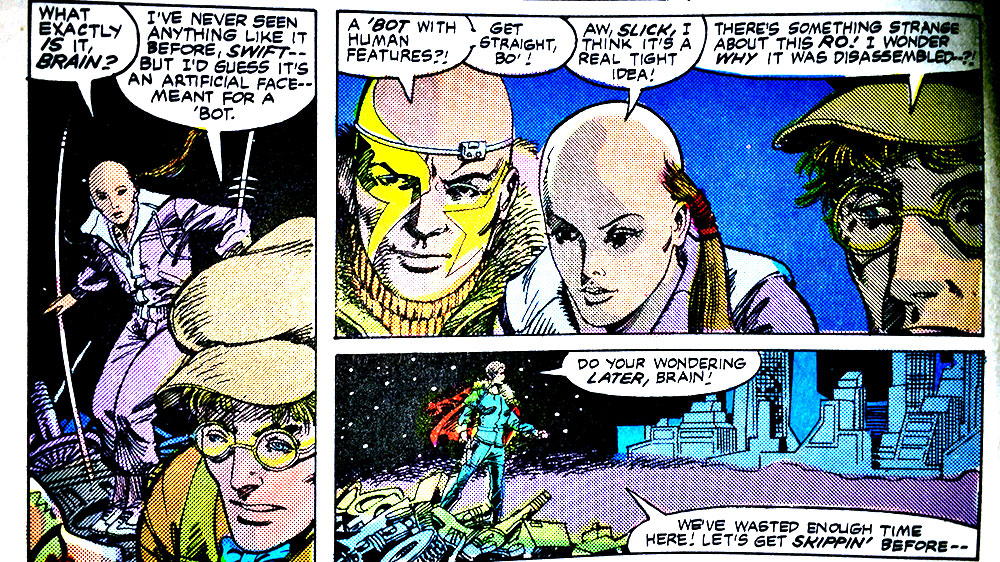
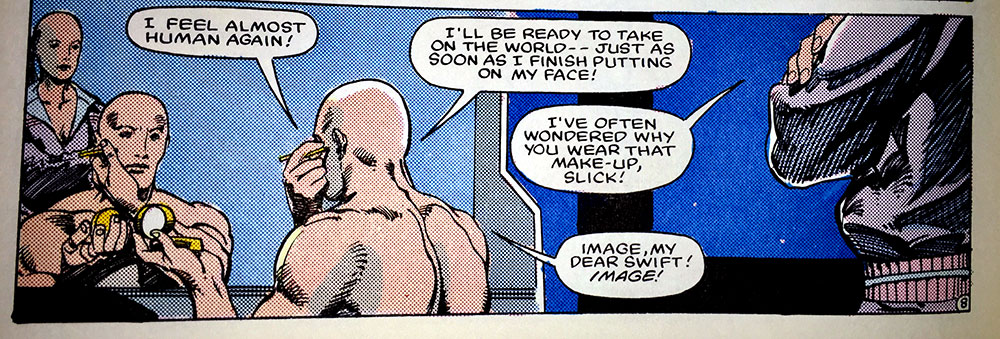


FYI: this was reprinted a couple of years back as IRON MAN 2020, with a couple of other IRON MAN 2020 appearances as well. Found it in a five buck trade box at the last comic convention I went to 2 or 3 years ago. Fun book. If you have it might want to go diving for the SPIDER-MAN Annual (i think it was #20) that IRON MAN 2020 was in. It’s pretty fun.
That’s the one that some fan plotted and Priest/Owsley scripted, right? James Fry or someone on art? I always enjoyed that one, but it was more because I’m a sucker for Priest than because of the Iron Man 2020 character.
“DeFalco gonna DeFalco.”
That pretty much sums up how I felt when I found the original issues at a show and bought them for pretty cheap. At some point, very early on, I stopped reading the words and just looked at the pretty BWS pictures.
Does the trade paperback also include somewhere in it the great cover art from the four issues, as well?
There’s an interview on the Comics Journal site where BWS explains that this series was his path back to comics. He’d forgotten how to tell a story dynamically. Trimpe let him work over his layouts and he picked it up again pretty quick.